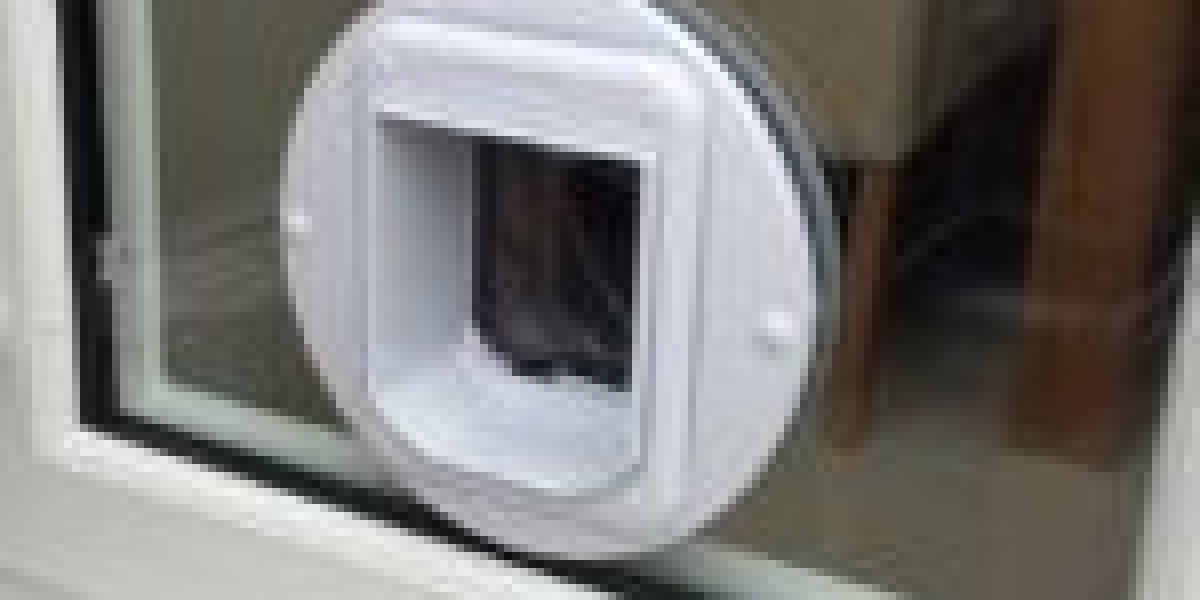The Purrfect Passage: Expert Tips for Cat Flap Installation
For cat owners, the desire to supply their feline companions with freedom and self-reliance while maintaining the security and convenience of their home is a common goal. A cat flap, relatively an easy solution, uses simply that-- enabling your cat to come and go as they please without requiring you to play doorman. Nevertheless, a poorly set up cat flap can cause draughts, security vulnerabilities, and disappointed felines. For that reason, understanding the subtleties of cat flap installation is essential for both your cat's wellness and your peace of mind.
This post serves as a comprehensive guide to cat flap installation, providing expert tips and advice to make sure a smooth and successful task. Whether you're an experienced DIY enthusiast or a first-timer, this guide will equip you with the understanding to develop the purrfect passageway for your cherished cat.

Choosing the Right Cat Flap: The First Step to Success
Before you even think of tools and design templates, it is important to select the best cat flap for your needs and your home. The market uses a varied variety of alternatives, each with its own set of features and advantages. Consider these elements when making your choice:
- Type of Cat Flap: Cat flaps are not a one-size-fits-all option. They come in different types, each offering different levels of security and convenience:
- Standard Manual Cat Flaps: These are the easiest and most economical options, allowing any cat (or small animal) to get in and exit. They appropriate for low-security environments.
- Magnetic Cat Flaps: These flaps react to a magnet connected to your cat's collar. They offer somewhat better security by preventing roaming animals from going into.
- Infrared Cat Flaps: Similar to magnetic flaps, these utilize an infrared sensing unit that reads an unique collar tag. They are more safe and secure than magnetic flaps and less vulnerable to disturbance.
- Microchip Cat Flaps: The most advanced choice, these flaps are activated by your cat's special microchip, making sure only your pet can get entry. This provides the greatest level of security and control, avoiding unwanted animals from entering your home.
- Material and Durability: Cat flaps are generally made from plastic or aluminium.
- Plastic flaps are usually more budget-friendly and lighter but may be less resilient and more susceptible to weathering.
- Aluminium flaps are more robust, weather-resistant, and protected, often including a more powerful locking mechanism.
- Size of Your Cat: Ensure the flap opening is big enough for your cat to pass through conveniently without having a hard time. Consider your cat's size and type when picking. Measure your cat from chest to ground and include a couple of inches for comfy clearance.
- Installation Location: Where will you be setting up the cat flap? Doors, walls, and windows each present different installation difficulties and need particular types of cat flaps or additional accessories like tunnels for thicker walls.
- Budget: Cat flaps range in price from standard manual models to state-of-the-art microchip variations. Set a spending plan and think about the long-term value and security advantages when making your choice.
Preparation is Paramount: Setting Yourself Up for Success
Once you have actually picked the perfect cat flap, appropriate preparation is essential to a smooth installation. Rushing into the process can result in mistakes and aggravation. Put in the time to plan and collect everything you need in advance:
Choosing the Right Location: Carefully think about the location for your cat flap.
- Security: Choose an area that is not easily available to intruders and ideally far from public view.
- Accessibility for Your Cat: Ensure the location is easily accessible for your cat, both within and outside. Think about the height from the ground and any obstacles.
- Convenience for You: Select an area that is practical for access and maintenance but does not interfere with the flow of your home.
- Avoiding Utilities: Check for any hidden wires, pipelines, or structural elements within the wall or door where you plan to install the flap.
Gathering the Necessary Tools and Materials: Having all the right tools at hand will make the installation process much easier. Essential tools generally include:
- Cat flap package: This must include the cat flap itself, a template, screws, and possibly a tunnel extension depending upon the design and installation type.
- Pencil and ruler/tape procedure: For marking and determining properly.
- Drill: With proper drill bits for pilot holes and possibly bigger bits for cutting if required by your selected technique.
- Jigsaw or Keyhole saw: For cutting the opening for the cat flap (depending on product and installation approach).
- Screwdriver: To secure the cat flap in location (typically a Phillips head screwdriver).
- Security glasses and gloves: For security throughout cutting and drilling.
- Sealant (optional): To seal around the cat flap and prevent draughts and water ingress, specifically for external doors and walls.
- Level (optional): To ensure the cat flap is installed directly.
Determining and Marking: Accuracy is important for a correct fit.
- Use the template supplied: Most cat flap kits come with a template. Use this to accurately mark the cutout area on your chosen area.
- Consider your cat's height: Position the design template at an appropriate height for your cat door for screen door. The bottom of the flap ought to be low enough for comfortable entry and exit but not too low that it enables rain or dirt to enter easily.
- Double-check measurements: Before you start cutting, confirm all your measurements and markings to avoid errors.
Step-by-Step Installation in a Wooden Door (Example)
Installing a cat flap in a wooden door is a common DIY job. Here's a basic detailed guide:
- Mark the Cutout: Tape the design template supplied with your cat flap set onto the door at the preferred place. Utilize a pencil to trace the summary of the design template onto the door.
- Drill Pilot Holes: Using a drill and a drill bit slightly larger than the width of your jigsaw blade (or keyhole saw), drill pilot holes at each corner of the marked overview and possibly a few along the straight edges to make starting the jigsaw much easier.
- Cut the Opening: Using a jigsaw or keyhole saw, carefully cut along the marked overview, connecting the pilot holes. Take your time and follow the line accurately. Guarantee you use shatterproof glass and gloves throughout this action.
- Test Fit and Sand (if required): Before completely inserting the cat flap, test fit it in the opening. If it's too tight, carefully sand down any rough edges of the cutout till the flap fits snugly.
- Insert and Secure the Cat Flap: Place the two halves of the cat flap (inner and outer frame) into the opening from either side of the door. Line up the screw holes.
- Screw Together: Using the screws provided, tighten up the 2 halves of the cat flap together. Do not overtighten, as this could damage the door or the cat flap.
- Seal (Optional): Apply sealant around the edges of the cat flap where it fulfills the door frame for added weatherproofing and insulation.
Installation Considerations for Different Materials
While wood doors are fairly straightforward, installing cat flaps into other products requires different methods:
- Glass Doors and Windows: Installing a cat flap in glass requires specialized tools and proficiency. It is highly suggested to employ a professional glazier to cut and install a cat flap in glass. Trying this yourself can be dangerous and risks shattering the glass.
- UPVC Doors: UPVC doors frequently have actually enhanced panels or might contain metal components. Installation can be intricate and might need professional help. Thoroughly inspect the door's construction before trying DIY installation or consult the door producer's standards.
- Walls: Installing a cat flap in a wall requires creating a tunnel through the wall density. This generally includes purchasing a tunnel extension package that matches the depth of your wall. The installation process resembles door installation but requires cautious preparation and potentially more comprehensive cutting and sealing.
Post-Installation Tips: Welcoming Your Cat to Freedom
When the cat flap is installed, the job isn't rather completed. Here are some tips for assisting your cat change and taking advantage of your brand-new cat flap:
- Introduce the Cat Flap Gradually: Don't anticipate your innovative cat flap installer to utilize the flap right away. Start by propping the flap open and encouraging your cat to stroll through it with deals with and positive reinforcement.
- Draw with Treats and Toys: Place deals with or toys on either side of the flap to incentivize your cat to explore and utilize it.
- Patience is Key: Some felines adjust rapidly, while others might require time. Be client and prevent requiring your cat through the flap, which can develop negative associations.
- Look for Draughts and Security: After installation, look for any draughts or spaces around the trained cat flap installer flap. Ensure it is safely fitted and working properly.
- Regular Maintenance: Keep the cat flap clean and devoid of debris. Occasionally examine the locking mechanism and hinges to ensure they are operating efficiently.
By following these tips and taking your time with the installation process, you can create a safe, convenient, and inviting cat flap for your feline buddy, boosting their liberty and enhancing their life while keeping the convenience and security of your home.
Regularly Asked Questions (FAQs) about Cat Flap Installation
Q: Can I set up a 24/7 cat flap installer flap in any door?
A: While cat flaps can be installed in many types of doors, some require more customized techniques or professional assistance. Wooden doors are the simplest for DIY installation. Glass doors and UPVC doors might need professional installation.
Q: How high should I install a cat flap?
A: The perfect height depends on your cat's size, however generally, the bottom of the flap must be around 10-15 cm (4-6 inches) from the ground. This permits most cats to go through comfortably without needing to crouch too low.
Q: What tools do I truly require for cat flap installation?
A: Essential tools include a drill, jigsaw or keyhole saw, screwdriver, pencil, ruler/tape measure, and security glasses and gloves. A sealant weapon and sealant are recommended for external doors and walls.
Q: How long does it require to install a cat flap?
A: For a simple installation in a wood door, it can take anywhere from 1 to 3 hours, depending on your DIY experience and the intricacy of the door. Installation in other materials or walls may take longer.
Q: What if I am not positive in my DIY skills?
A: If you are uneasy with DIY projects, it is always best to work with a professional handyman or carpenter to set up the cat flap for you. This guarantees a proper and safe installation, particularly for more complex installations like glass or UPVC doors and walls.
Q: How can I stop stray cats from using my cat flap?
A: Microchip cat flaps are the most effective way to avoid roaming animals from entering your home as they just open for your cat's signed up microchip. Magnetic and infrared flaps use some, however less reliable, security.
Q: Do cat flaps let in draughts?
A: Modern cat flaps are developed with draught-excluding functions like brushes or magnetic closures. However, proper installation and sealing are important to reduce draughts.
Q: How do I train my cat to use a cat flap?
A: Patience and favorable support are crucial. Start by propping the flap open, utilizing deals with and toys to lure your cat through. Slowly minimize the openness of the flap as your cat gets more comfy.
Q: Can I install a cat flap in a wall?
A: Yes, cat flaps can be set up in walls. This usually needs a tunnel extension package to link the inner and external frames through the density of the wall. Wall installations might be more intricate and require mindful planning.
Q: What maintenance is required for a cat flap?
A: Regularly tidy the flap and surrounding location to get rid of dirt and particles. Check the hinges and locking system occasionally and tighten up screws if essential. Oil hinges with silicone spray if they become stiff.








